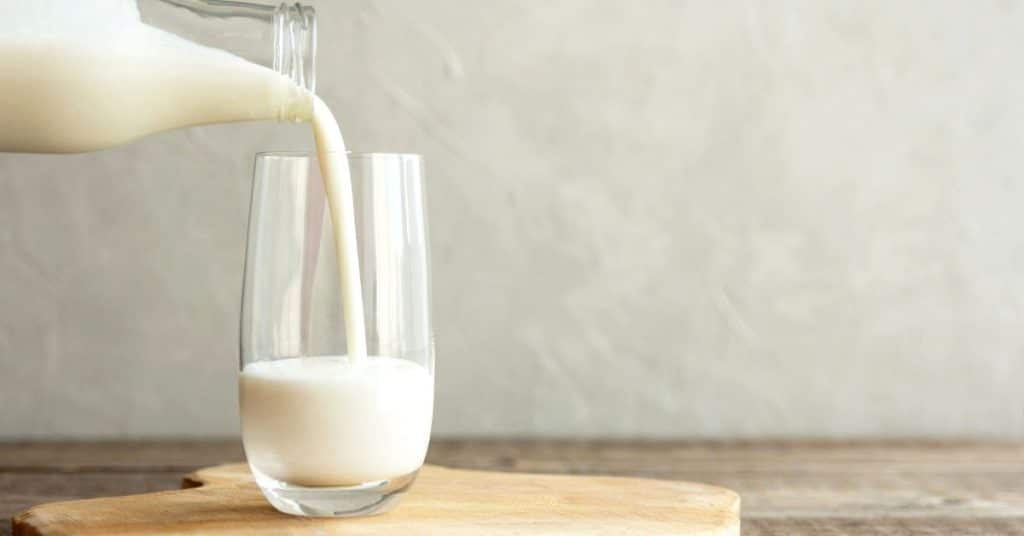

A large observational cohort study in Sweden found that women consuming more than three glasses of milk daily had almost twice the mortality over 20 years than women consuming fewer than one glass daily.[1] Additionally, the higher milk drinkers showed no signs of improved bone health. In fact, they had more fractures, particularly hip fractures.
Interestingly, the study found that fermented milk products (cheese and yogurt) significantly decreased mortality and fractures among these women. For each serving of fermented dairy products, the mortality and hip fracture rates were reduced by 10–15 percent. The researchers pinned the negative effects of liquid milk on D-galactose, a breakdown product of lactose shown to be pro-inflammatory. Milk has much more D-galactose than cheese and yogurt have.
I am surprised this study garnered so much mass media attention since it highlights the deleterious side of milk, but it’s important to keep the findings in context. When it comes to the dairy’s health effects, the context is not so pretty:
- Observational studies, both international studies and within single populations, have linked higher dairy intake to increased risk of prostate cancer.[2].
- Higher dairy intake has been linked to elevated ovarian cancer risk in observational cohort studies.[2].
- Cow’s milk protein may play a role in triggering type 1 diabetes, through a process called molecular mimicry.[3].
- Populations that consume more dairy have higher rates of multiple sclerosis[4].
- Interventional animal experiments and human studies show that dairy protein increases levels of IGF-1 (insulin-like growth factor-1); increased IGF-1 has been implicated in several cancers.[5]
- Dairy protein has been shown to promote increased cholesterol levels in interventional animal experiments and human studies, and atherosclerosis in animal studies.[6] and human experiments[7], dairy protein has been shown to promote increased cholesterol levels (in the human studies and animal studies) and atherosclerosis (in the animal studies).
- Casein, the primary milk protein, promotes cancer initiated by a carcinogen in experimental animal studies[8].
- D-galactose is pro-inflammatory and used to create animal models of aging[1].
- Higher milk intake is linked to acne.[9].
- Milk intake has been implicated in constipation and ear infections.[10][2].
- Milk is perhaps the most common self-reported food allergen worldwide.[11].
- Much of the human population cannot adequately digest milk due to lactose intolerance.
So, although I am very pleased that the recent Swedish study is publicizing some of the evidence against milk, the far more powerful story would include the largely hidden context of diet and dairy research. A wealth of evidence shows dairy consumption can harm us in numerous ways; conversely, scant evidence convincingly shows that milk prevents fractures.
Looking beyond the headlines, we should remember that this lactation fluid exists to nourish rapidly growing calves in nature.
References
- Michaelsson K, Wolk A, Langenskiold S, et al. Milk intake and risk of mortality and fractures in women and men: cohort studies. Bmj 2014;349:g6015.
- Lanou AJ. Should dairy be recommended as part of a healthy vegetarian diet? Counterpoint. The American journal of clinical nutrition 2009;89:1638S-42S.
- Dahl-Jorgensen K, Joner G, Hanssen KF. Relationship between cows’ milk consumption and incidence of IDDM in childhood. Diabetes Care 1991;14:1081-3.
- Malosse D, Perron H, Sasco A, Seigneurin JM. Correlation between milk and dairy product consumption and multiple sclerosis prevalence: a worldwide study. Neuroepidemiology 1992;11:304-12.
- Key TJ. Diet, insulin-like growth factor-1 and cancer risk. Proc Nutr Soc 2011:1-4.
- Kritchevsky D. Dietary protein, cholesterol and atherosclerosis: a review of the early history. The Journal of nutrition 1995;125:589S-93S.
- Gardner CD, Messina M, Kiazand A, Morris JL, Franke AA. Effect of two types of soy milk and dairy milk on plasma lipids in hypercholesterolemic adults: a randomized trial. Journal of the American College of Nutrition 2007;26:669-77.
- Youngman LD, Campbell TC. Inhibition of aflatoxin B1-induced gamma-glutamyltranspeptidase positive (GGT+) hepatic preneoplastic foci and tumors by low protein diets: evidence that altered GGT+ foci indicate neoplastic potential. Carcinogenesis 1992;13:1607-13.
- Spencer EH, Ferdowsian HR, Barnard ND. Diet and acne: a review of the evidence. Int J Dermatol 2009;48:339-47.
- Caffarelli C, Baldi F, Bendandi B, Calzone L, Marani M, Pasquinelli P. Cow’s milk protein allergy in children: a practical guide. Italian journal of pediatrics 2010;36:5.
- Rona RJ, Keil T, Summers C, et al. The prevalence of food allergy: a meta-analysis. J Allergy Clin Immunol 2007;120:638-46.
Copyright 2025 Center for Nutrition Studies. All rights reserved.
Deepen Your Knowledge With Our
Plant-Based Nutrition
Certificate
Plant-Based Nutrition Certificate
- 23,000+ students
- 100% online, learn at your own pace
- No prerequisites
- Continuing education credits











